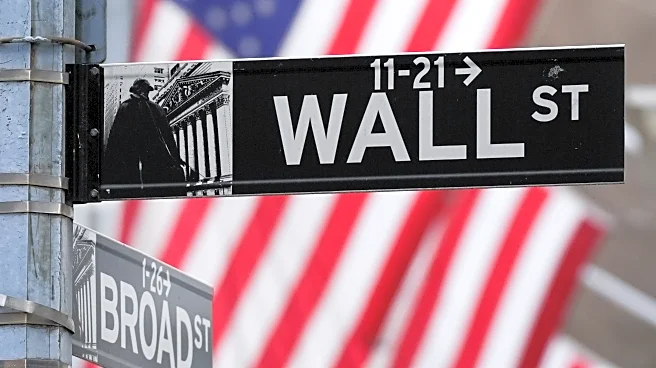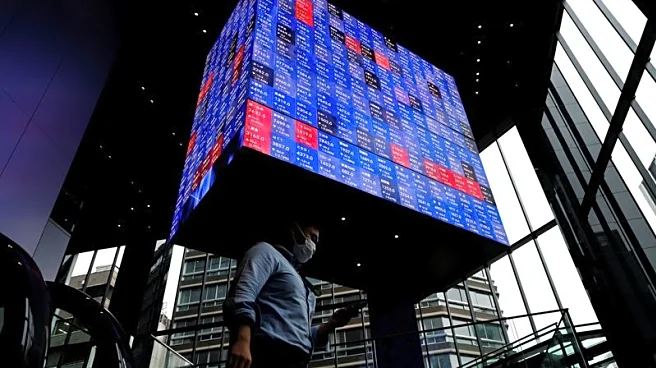What's Happening?
Wells Fargo has seen a positive response from investors following a series of strategic updates shared by CFO Mike Santomassimo at the Barclays Global Financial Services Conference. The bank's stock rose by approximately 2% after Santomassimo highlighted the lifting of the $1.95 trillion asset cap, which has allowed the bank to pursue growth in retail and commercial deposits, as well as wealth and asset management. Additionally, Wells Fargo has repurchased $5.5 billion of its stock this quarter, signaling confidence in its earnings outlook. The bank's credit card business is also expected to significantly impact its bottom line in the coming years. Analysts have responded positively, with Piper Sandler raising its price target and maintaining a buy-equivalent rating, while TD Cowen remains cautiously optimistic.
Why It's Important?
The developments at Wells Fargo are significant as they indicate a potential turnaround for the bank, which has faced regulatory challenges in the past. The lifting of the asset cap provides Wells Fargo with greater flexibility to expand its business operations and improve its competitive position in the financial sector. The stock buyback and focus on credit card growth suggest a strategic shift towards enhancing shareholder value and tapping into underutilized customer segments. These moves could lead to increased investor confidence and potentially higher stock valuations, benefiting stakeholders and the broader financial market.
What's Next?
Wells Fargo's next steps will likely involve capitalizing on the newfound flexibility to expand its deposit base and grow its wealth management services. The bank may also focus on further developing its credit card offerings to capture a larger market share. Investors and analysts will be closely monitoring the bank's performance in these areas, as well as any updates on its financial guidance. The upcoming Federal Reserve meeting and economic indicators such as the Producer Price Index (PPI) and Consumer Price Index (CPI) will also play a role in shaping the bank's strategic decisions and market performance.













